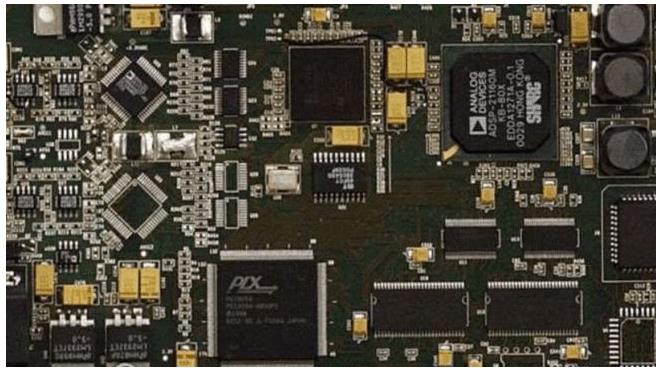Hello everyone, I am the editor, today I will talk to you about the OSP surface treatment of PCB circuit boards. Let’s take a look at it together.
Double-sided blue oil lead-free tin plate
The process flow of PCB circuit board OSP:
Degreasing-->Secondary Washing-->Micro-etching-->Secondary Washing-->Pickling-->DI Washing-->Film Air Drying-->DI Washing-->Drying
1. Degreasing
The degreasing effect directly affects the quality of film formation. Poor degreasing results in uneven film thickness. On the one hand, the concentration can be controlled within the process range by analyzing the solution. On the other hand, always check whether the degreasing effect is good. If the degreasing effect is not good, replace the degreasing fluid in time.
2. Micro-etching
The purpose of micro-etching is to form a rough copper surface to facilitate film formation. The thickness of the microetching directly affects the film formation rate. Therefore, to form a stable film thickness, it is very important to keep the thickness of the microetching stable. Generally, it is more appropriate to control the micro-etching thickness to 1.0-1.5um. Before each shift, the micro-etching rate can be measured, and the micro-etching time can be determined according to the micro-etching rate.
3. Film formation

It is best to use DI water for washing before film formation to prevent the film formation liquid from being contaminated. It is also best to use DI water for washing after film formation, and the PH value should be controlled between 4.0-7.0 to prevent the film from being polluted and damaged. The key to the OSP process is to control the thickness of the anti-oxidation film. The film is too thin, and the thermal shock resistance is poor. During reflow soldering, the film will not be resistant to high temperatures (190-200°C), which will ultimately affect the soldering performance. On the electronic assembly line, the film cannot be well dissolved by the flux., Affect welding performance. It is generally appropriate to control the film thickness between 0.2-0.5um.
Disadvantages of PCB circuit board OSP process
1. Of course, OSP has its shortcomings. For example, there are many types of actual formulas and different performances. In other words, the certification and selection of suppliers must be done well enough.
2. The disadvantage of the OSP process is that the protective film formed is extremely thin, easy to scratch (or scratch), and must be carefully operated and operational.
3. At the same time, the OSP film (referring to the OSP film on the unsoldered connecting plate) that has undergone multiple high-temperature welding processes will be discolored or cracked, which will affect the weldability and reliability.
4. The solder paste printing process must be mastered well, because the poorly printed board cannot be cleaned with IPA, etc., which will damage the OSP layer.
5. It is not easy to measure the thickness of transparent and non-metal OSP layers, and it is not easy to see the degree of coverage of the coating by transparency, so it is difficult to evaluate the quality stability of suppliers in these aspects;
OSP technology does not have IMC isolation of other materials between the Cu of the pad and the Sn of the solder. In the lead-free technology, the SnCu in the solder joints with high Sn content grows quickly, which affects the reliability of the solder joints.
This is the OSP surface treatment of the PCB circuit board